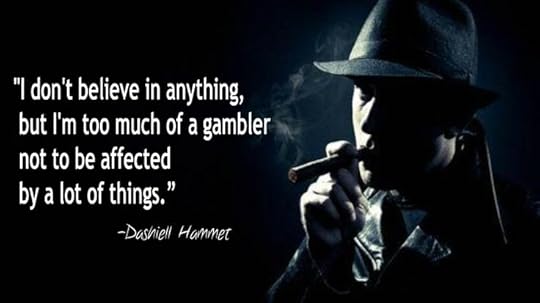What do you think?
Rate this book


256 pages, Paperback
First published January 1, 1929



"Fitzstephan was ploughing the same field for literary material. We became acquainted and pooled forces. I got more out of the combination than he did, since he knew the spook racket inside and out."
"Come on, out with it. Don't try to be subtle with me, my son; that's not your style at all. Try it and you're sunk."

"And so [ended] the Great Dain Curse."
"I remembered Fitzstephan as a long, lean, sorrel-haired man of thirty-two, with sleepy grey eyes, a wide, humorous mouth, and carelessly worn clothes; a man who pretended to be lazier than he was, would rather talk than do anything else, and had a lot of what seemed to be accurate information and original ideas on any subject that happened to come up, as long as it was a little out of the ordinary."
”’[…] I believed you until you came in just now, and then I saw – ‘ She stopped.
‘Saw what?’
‘A monster. A nice one, an especially nice one to have around when you’re in trouble, but a monster just the same, without any human foolishness like love in him […]’”

Through the thing’s transparent flesh I could see my hands clenched in the center of its damp body. I opened them, struck up and down inside it with stiff crooked fingers, trying to gouge it open; and I could see it being torn apart, could see it flowing together after my clawing fingers had passed; but all I could feel was its dampness.
“Are you – who make your living snooping – sneering at my curiosity about people and my attempts to satisfy it?”
“We’re different,” I said. “I do mine with the object of putting people in jail, and I get paid for it, though not as much as I should.”
“That’s not different,” he said. “I do mine with the object of putting people in books, and I get paid for it, though not as much as I should.”
“Yeah, but what good does that do?”
“God knows. What good does putting them in jail do?”
“Relieves congestion,” I said. “Put enough people in jail, and cities wouldn’t have traffic problems.”